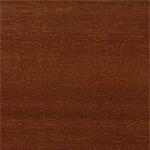Serving Upstate NY—VT—MA • For selections & prices, CALL or EMAIL US
Paraju
Wood Flooring Species
Scientific Name:
Manilkara bidentata
Other Names and Species:
Acana
Balata
Beefwood
Bulletwood
Macaranduba
Massarandu
Nispero
Pamashtu
Quinilla Colorada
Red Balasta
Origin:
Central and South America
Appearance:
The sapwood of paraju is white to light brown, while the heartwood is light to darker reddish-brown in color. The species has a straight, sometimes wavy grain and is fine and uniform in texture. This is a low-to-medium luster wood.
Properties:
Paraju is highly resistant to termites and decay. The wood remains smooth under friction and is reported to have no odor. Paraju is diffuclt and time-consuming to dry properly. Once dried, however, this species is very resistant to moisture absorbtion.
Janka Hardness: 3190
Paraju is one of the hardest species of wood as a flooring option. It is over one hundred thirty-three percent harder than white oak, roughly seventy-five percent harder than hicory or pecan, and surpasses Brazilian cherry’s ranking of 2350 by over thirty-five percent.
Workability:
Paraju is moderately easy to saw. Pre-boring is suggested, yet the wood holds nails well once applied. Gluing can be difficult to accomplish with paraju flooring. This species sands very well and polishes to a smooth surface.
Principal Uses:
Paraju’s uses include furniture, cabinetry, musical instruments, and shingles.





